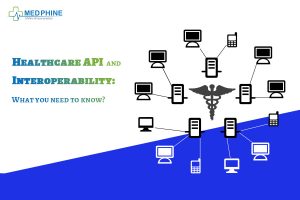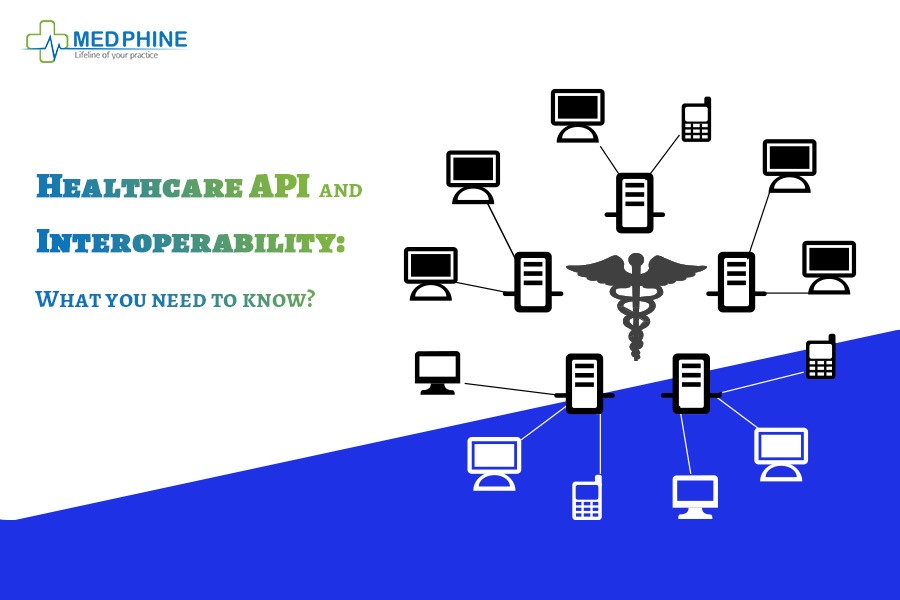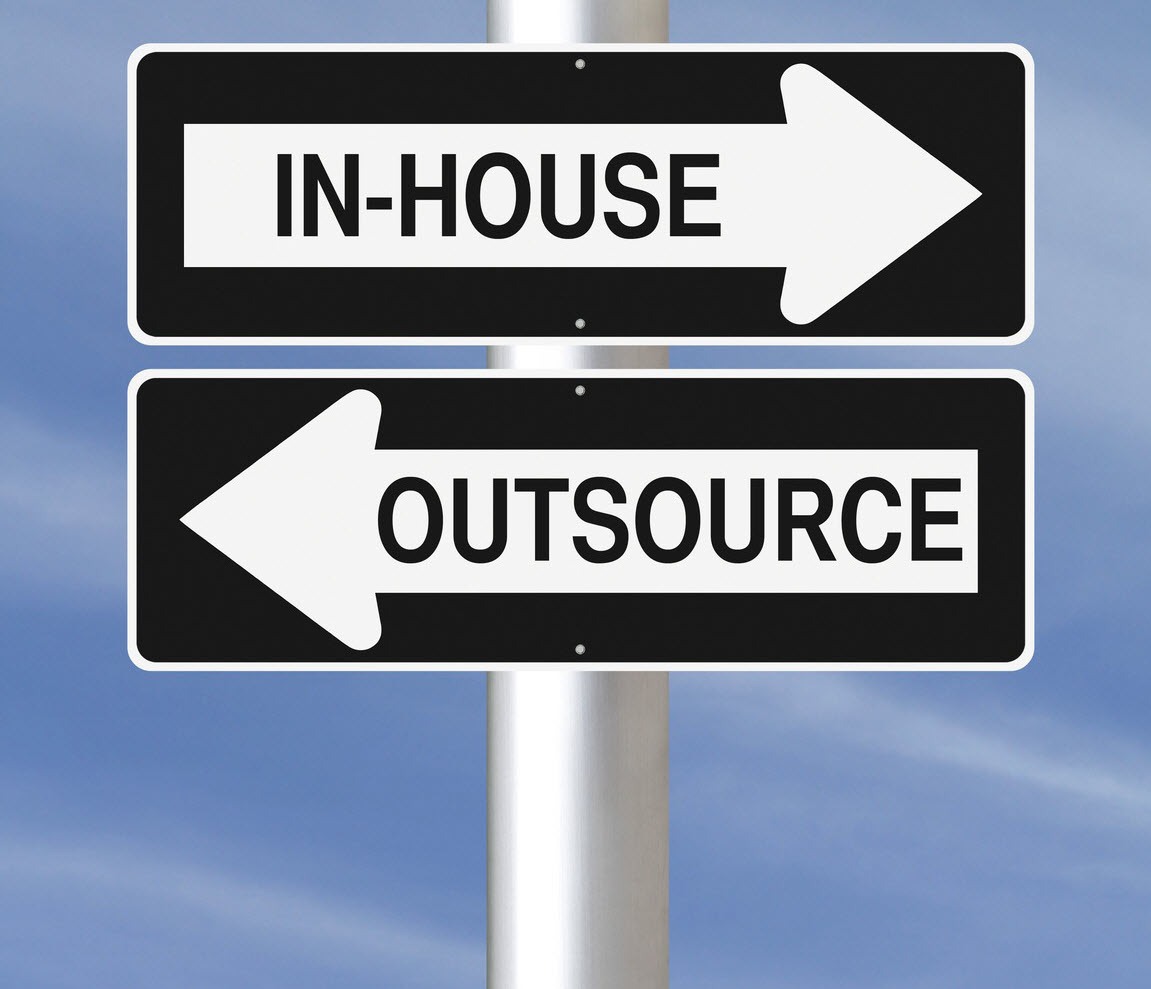
Dispensing quality care and treatment to the patients has always been the primary goal and concerns of the healthcare industry. Every year we come across latest technological advancement that further streamline the care process. One such most recent term in the health ecosystem is interoperability.
What Is Interoperability?
Enforcement upon healthcare providers to switch from paper to electronic health records hasn’t been an easy road. This led to gaps and disjointed communication, for which interoperability was introduced.
HIMSS defines interoperability as the proficiency of different devices, applications and information systems to infallibly connect, access, exchange and utilize the data across and outside the organizational perimeter with permitted authorities.
With the aim to provide superior treatment to the patient’s interoperability allows for connectivities and integrations in a safe and secure framework, making the data available for use and share without the end-user interceding the process.
The goal of interoperability is to provide the healthcare organization with a holistic view of the patient-related information, regardless of the practices, laboratories, healthcare providers, pharmacies or hospitals.
Unlike before HIMSS has identified four ways in which the data can exchange within a single healthcare setting:
FOUNDATIONAL: As the term suggests, foundational interoperability is responsible for laying down the establishment for transfer and exchange of data between different entities. It creates the primary requirements for sending and receiving of the information.
STRUCTURAL: The manner in which a data will be sent across the systems, so as to maintain its sanctity and ensure security, is defined by the structural interoperability.
ORGANIZATIONAL: Comprising of organizational and technical components, organizational interoperability ensures the safe, streamlined and well-timed exchange and utilization of the information across the healthcare organization.
SEMANTIC: Leveraging the structure as well as the codes of the data, semantic interoperability allows for the system to exchange, interpret and use the data.
While it’s easy to understand the motive behind this development, interoperability benefits in way more than one:
- QUALITY CARE:
Lack of integrated healthcare IT system has led to massive delays in the treatment of patient being dispensed inappropriate treatment because the provider does not have all the patient-related information. Visibility and access of the patient data comprising of symptoms, medical history, complications, procedures, etc., provided by interoperability helps in delivering quality care. The care coordination frees the patient from the burden of doing most of the administrative tasks, thereby enriching the patient’s experience.
- ENHANCED SAFETY:
Missing and incomplete data are one of the significant roadblocks in the proper functioning of a healthcare facility. Interoperability facilitates seamless capture and interpretation of data across the healthcare organization, which minimize the possibility of error. This will further help them in identifying and preventing the procedural mistake leading to the error in the outcome.
- DATA ACCURACY:
With IT system cohesively interacting with one another, interoperability has helped patients and providers get access to accurate public health data. With interoperability’s sharing and interpretations of the data, healthcare organizations have found a platform to collectively educate the concerned a lot about the imminent health crisis so that they are well prepared to resolve it.
- LOWER COST:
With interoperability’s ability to streamline, exchange, and utilize data across the healthcare organization, the time spent in finding and skimming through the patient’s data is now saved. Leading to higher productivity and lower healthcare cost.
- MAINTAINS PATIENT-DOCTOR PRIVACY:
An electronic data management system cut down the need for manually updating the patent records by the clinical staff, reducing the possibility of errors. Interoperability can be beneficial in maintaining the right to patient-doctor privacy, which often gets violated with manual processing.
Interoperability allows for those mentioned above and more such benefits with application programming interfaces that enable the transfer of data and communication between different information system.
- API enables sending and receiving of data from one system to another. This API helps to update an individual record or provide data in a collective form to create reports.
- API also facilitates proper synchronization of patient’s information across provider, insurance company and the facility in order to minimize the delay of the further course of treatment due to time wasted in eligibility verification for the patient coverage.
- Unlike the times of phone calls and fax machines, every department in a single healthcare facility is leveraging data from a different electronic health record system. With the healthcare landscape becoming increasingly complex, the data is spread across the various divisions.
- Hospitals and providers to be able to provide a holistic treatment, need a cohesive clinical picture of the patient-including history, allergies, complications, which has gone hazy with the multiple EHRs. API frameworks act as a bridge between these various EHR systems and provide a meaningful exchange of data across the healthcare organization. You are thereby saving significant time and money.
APIs being in nascent have their challenges which still need to be fixed for better outcomes, such as:
- The lack of standards of data in the healthcare landscape and multiple technologies has raised the requirement for a customized API for different services it is providing to various systems.
- The extract/transform/ load script will need timely reinvention with the data sources, and technologies are continuously evolving. This makes it a costly and tedious affair.
- Ensuring adequate exchange and synchronization of the complex healthcare data across different healthcare system can be a strenuous task, ultimately affecting the results.
How can you ensure greater healthcare interoperability in your organization?
- With the shift to a value-driven healthcare landscape, it is essential for the provides to research and come up with solutions that strengthen the connectivity across different healthcare entities and healthcare exchange systems.
- Similarly, there is a need for timely re-evaluating the IT resources and solutions that you have been implementing so that they comply with the value-based care requirements and promote interoperability across structural, semantic and foundational levels.
- Every process associated with patient health-related information, be it data acquisition, formatting or conversion should be standardized to improve the interoperability and result in more accurate and secure health data exchange.
Interoperability and API still have a long way to go, but its success and failure is an equal responsibility of every entity of the healthcare organization.



